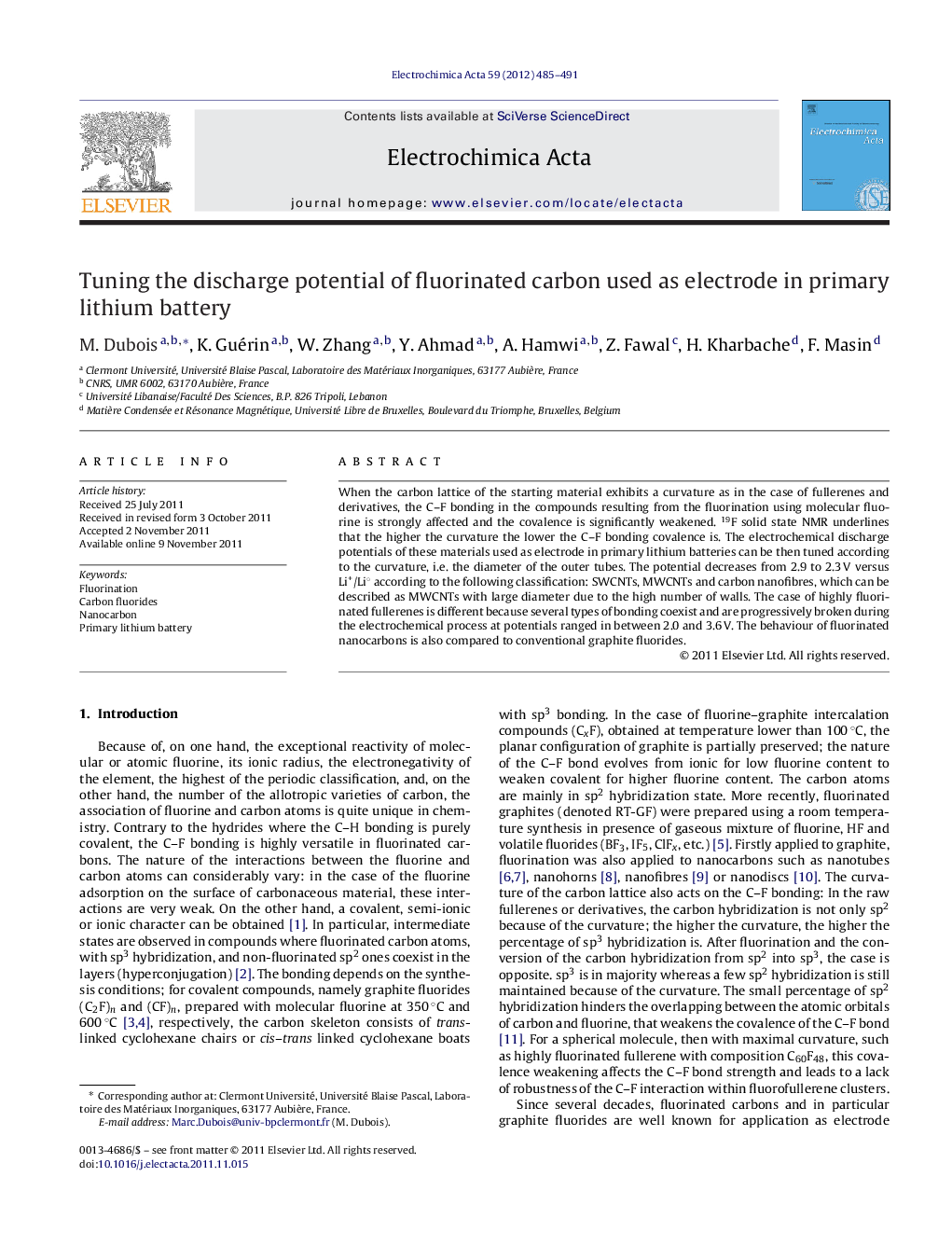| Article ID | Journal | Published Year | Pages | File Type |
|---|---|---|---|---|
| 189372 | Electrochimica Acta | 2012 | 7 Pages |
When the carbon lattice of the starting material exhibits a curvature as in the case of fullerenes and derivatives, the C–F bonding in the compounds resulting from the fluorination using molecular fluorine is strongly affected and the covalence is significantly weakened. 19F solid state NMR underlines that the higher the curvature the lower the C–F bonding covalence is. The electrochemical discharge potentials of these materials used as electrode in primary lithium batteries can be then tuned according to the curvature, i.e. the diameter of the outer tubes. The potential decreases from 2.9 to 2.3 V versus Li+/Li° according to the following classification: SWCNTs, MWCNTs and carbon nanofibres, which can be described as MWCNTs with large diameter due to the high number of walls. The case of highly fluorinated fullerenes is different because several types of bonding coexist and are progressively broken during the electrochemical process at potentials ranged in between 2.0 and 3.6 V. The behaviour of fluorinated nanocarbons is also compared to conventional graphite fluorides.
► Use of fluorinated nanocarbons CFx as electrode material in primary lithium battery. ► The effect of the curvature of CFx on the discharge potential. ► Tuning of the discharge potential of CFx in primary lithium battery.
